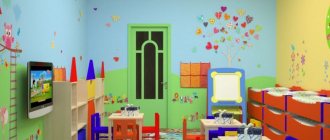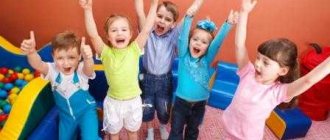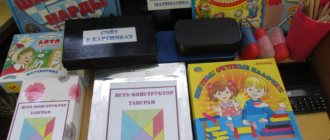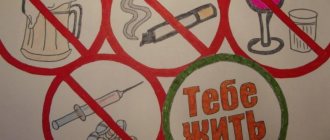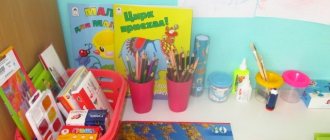Country, Motherland, Fatherland... As soon as you hear these words, you immediately imagine images close to us since childhood: home, mother, father, Russia.
Instilling a sense of patriotism in preschoolers is a complex and lengthy task. Love for family, loved ones, kindergarten, and country is of great importance in the development of a full-fledged future citizen. No matter what country a child grows up in, he connects all his feelings with the places where he was born and raised: with the kindergarten where he went as a child, with the school where he learned the basics of knowledge, with his yard and street.
To cultivate a sense of love for the Motherland, for their hometown, educators together with parents can decorate patriotic corners in kindergarten with their own hands.
The importance of patriotic education
The fate of Russia directly depends on what qualities will be developed in children, who determine the future of our country. What this future will be like depends to a large extent on us and on the concepts that will be embedded in the minds of children.
The first years of a child’s life are the most important stage in the upbringing and development of a future citizen and person. At this age, those feelings and character traits of a child are formed that, from birth, connect him with his family, people, country and determine his future path in life.
Cultivating patriotic feelings is a long process that is based on the language, songs, and music of the Russian people. In preschool age, it is very important to saturate the child’s soul with the concept of honor and human values.
Tasks of a teacher in the development of patriotism
A preschooler's love for his country begins with love for his relatives - mother, father, grandfather, grandmother, his home. Patriotic corners in kindergarten help to generate and develop this feeling.
The main directions of work of a teacher in patriotic education:
- to cultivate a tolerant attitude towards other nations and people of different nationalities;
- to form a child’s spiritual and moral attitude towards family, country, and the nature of his native land;
- to instill a sense of self-esteem in a preschooler.
The development of feelings of patriotism and citizenship in preschoolers can only be successful if the kindergarten teacher knows well the history of his city, country and is able to convey this knowledge to the child.
Main attributes
Properly designed patriotic corners in kindergarten will attract children’s attention to studying their country, will provide an opportunity to select material based on the children’s interests, and will allow teachers to work together with children and their parents.
Materials placed in the corner should cover the main directions of patriotic education and may include the following areas: “My family”, “My native land”, “Folk rituals and crafts”, “Moscow is the capital of Russia”, “Who are the defenders of the Fatherland ? and etc.
The main attributes that patriotic corners in kindergarten should contain:
- A photo or portrait of the President of Russia is placed either in the center of the corner or on the left.
- The anthem is a symbol of our country and is a musical and poetic work. Usually presented as a text version and posted on a stand, there should also be a musical version for listening.
- The coat of arms is a state symbol, it is a quadrangular shield, it depicts a crowned double-headed eagle holding an orb and a scepter in its paws. On the eagle's chest is an image of St. George the Victorious killing a serpent.
- The flag of Russia is a piece of fabric that has a rectangular shape and consists of three stripes of different colors: white - means purity and peace; blue is a symbol of constancy and faith; red – energy, strength and blood that was shed in the struggle for the Motherland. In the corner, the flag can be presented in the form of a large-sized canvas mounted on the wall, or as a small-sized flag standing on a stand.
Military equipment
We have developed interesting patriotic crafts for children aged 3 to 5 years. For example, a tank made from a dishwashing sponge or matchboxes.
For the creative process you will need:
- Dark green dishwashing sponge;
- Brown cardboard;
- Scissors;
- Glue;
- Cotton swab for cleaning ears;
- Acrylic paints in dark green, black, brown, red;
- Brush;
- Matchbox;
- Green colored paper;
- A simple pencil.
Work progress:
- The matchbox must be covered with green colored paper. In this way, it is possible to create a compact tower that will hold the barrel. Bright cellulose can be fixed using glue.
- Draw wheel templates on brown cardboard. Using scissors, carefully cut out dense pieces. Next, glue them to the side of the sponge. This element will act as the main body of the combat vehicle. For this craft you will need 6 pieces of the same size.
- You need to glue a green matchbox tower onto a porous surface. A cotton swab will help you make the barrel of the tank. We carefully paint the soft base green. For work it is best to use acrylic paints.
- We draw red stars on the surface of the tower. Tracks can be made from brown cardboard strips and glued to the wheels. The photo of the patriotic craft shows the finished product.
Corner of patriotic education in the younger group
Children who have just come to kindergarten do not yet understand the meaning of words such as people, country, culture. The homeland, in their understanding, is their loved ones, their parents, so they should receive all the necessary information in a special corner.
The design of patriotic corners in kindergarten should be done depending on the age of the children. In the younger group, the parents themselves can create such a corner, since they are also interested in raising a future citizen of their country.
It will be interesting for kids to look at the model of their small homeland in the corner - the city in which they were born, monuments, their kindergarten. Children will receive this information with pleasure. Educators can direct children's attention to nurturing love for their city, to protecting its monuments and architectural structures.
Selecting a location and main requirements
Corners in kindergarten are usually located according to thematic zones: physical education, book, creative, patriotic, and so on. In each age group, the appropriate arrangement of furniture and wall materials for each zone is thought out in accordance with the age of the children. The design of corners in kindergarten in each group must meet a number of general requirements. First of all, this is safety .
Our safety
This requirement implies that furniture, stands and visual aids located in the safety zone must be made of high-quality, environmentally friendly materials. Also, the safety of the design of this area includes: the stability of the furniture, well-fixed shelves and racks, the absence of sharp corners and chips.
The second requirement is accessibility. This area should be located in a place free for children to access, be clearly visible, and correspond to the height of the children. Safety zone materials must take into account the gender, age and individual capabilities of children.
The third requirement is aesthetic design. It is ensured through the beautiful design of stands, shelves, and the demonstration and teaching materials themselves. There should be no torn books or broken toys in this area. It is better to choose bright, saturated colors for decoration, but at the same time compatible with each other.
Another requirement is flexibility. It assumes the possibility of periodically updating materials in the security zone, introducing new details, interesting books, toys, and visual aids into its design.
A separate information stand “Safety Corner in Kindergarten” is set up in the preschool institution. Most often, it is located in the lobby so that parents of students can get acquainted with up-to-date and competent information at any time. Materials for the stand are developed jointly with employees of the State Traffic Inspectorate.
Features of working with children in the corner
Educators, when planning work on patriotic education, can divide the material into blocks: “My family”, “My favorite city”, “My homeland is Russia”.
Each topic is studied using conversations, didactic games, excursions, conversation games, and dramatization games. Work in the corner is carried out from the closest and most understandable for children (family, kindergarten) to the more complex (country, city).
After familiarization with the materials, sports festivals dedicated to the defenders of the Fatherland are held in the corner with children, Russian nursery rhymes, sayings, and proverbs are studied, and the need for folk music and fairy tales is brought up in children. The main goal of such classes is to develop in children an understanding of the beauty of the language, Russian nature, and a sense of pride in their Motherland.
Only constant and systematic joint work of preschool educational institutions workers and parents will allow preschoolers to develop a sense of patriotism, civic consciousness, and a tolerant attitude towards people of other nations and peoples. Proper design of patriotic corners in kindergarten will only help with this.
Airplane made from a plastic bottle
Products made from scrap materials turn out to be unusual. For example, from a simple plastic bottle you can create a beautiful airplane that children will use for everyday games.
What will be needed to build it? For creative activities use:
- Plastic bottle with a volume of 0.5 l;
- Green cardboard;
- Red acrylic paint.
Progress:
- We make through holes in the side parts. Cut out two rectangles from green cardboard. Their length should be at least 15 cm and width 5 cm. Carefully insert the cardboard blanks into the plastic frame. Draw red stars on the surface of each wing.
- We make the propeller out of cardboard. We cut a through hole in the middle. Thanks to it, it will be possible to fix the part in the lid area.
- Let's move on to the tail section. It consists of 3 rectangles. We glue the parts at an angle of 45 degrees. Using a heat gun we fix the part on the surface of the plastic bottle. The combat aircraft is ready!



